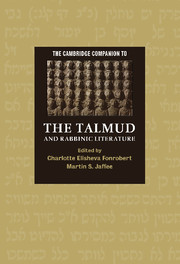Book contents
Introduction: The Talmud, Rabbinic Literature, and Jewish Culture
Published online by Cambridge University Press: 28 November 2007
Summary
The Babylonian Talmud (Hebr. Talmud Bavli) is without doubt the most prominent text of rabbinic Judaism's traditional literature. Indeed, the simple phrase “the Talmud says” often stands as a kind of shorthand for any teaching found anywhere in the vast rabbinic corpus surviving from Late Antiquity. Among Jews, of course, the Talmud has been revered, studied, and commented upon over and over again for more than a millennium. But preoccupation - even obsession - with the Talmud has extended at times beyond the borders of traditional rabbinic communities as well. Christian theologians and historians have on occasion viewed the Talmud, much more than the Hebrew Bible itself, as encapsulating the spiritual and intellectual core of Judaism.
This interest has not always had benign results; it has, at times, turned the Talmud into a target of polemics and even violence. Repeated burnings of the Talmud and its associated writings by Christian authorities in medieval Europe were meant to destroy the intellectual sustenance of Judaism. In modern times, the Talmud has become a target even of Jews: Many secularized Jews of the post-Enlightenment period ridiculed its “primitive” religious worldview; reformers of Judaism sought to move behind it, as it were, to restore the Bible (or certain interpretations of it) as the normative source of Jewish belief; while Zionist Jews, concerned with restoring a vital Jewish culture in the ancient Jewish homeland, belittled the “diasporic” culture of “sterile” learning embodied by the Babylonian Talmud.
- Type
- Chapter
- Information
- Publisher: Cambridge University PressPrint publication year: 2007

